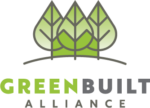When a tree falls in the forest, does it rot? Of course the answer is yes. When we build our homes out of trees, can they rot? Same answer.
The beautiful Appalachian Mountains have a dark side. Our climate is one of the most challenging climates for houses. Technically called a “mixed humid climate,” the Appalachians subject our homes to heat, cold, dry and wet. The ecological diversity we all love continually exposes our homes to all manner of creatures that want to live in and dine on our shelter. High humidity levels support a microcosm of fungi, such as mold and mildew. Our homes are an intricate system filled with other systems that are designed to keep us comfortable. We have to be diligent to fend off the environmental extremes of the Appalachians.
Let’s start with the creatures. Our homes emulate natural conditions that support the fauna of our area. For example, crawlspaces are like rocks. Mice, rats, snakes and other animals like to hide and live under rocks. Provide an entry point and they will make themselves at home in your crawlspace. Conveniently, crawlspaces provide your cute, new housemates with lots of necessities. The insulation makes great nesting material and leaks provide water.
Additionally, wood siding can provide a home to numerous insects, all well evolved to get into wood. Once a tree, wood can be burrowed into by carpenter bees, ants and other insects. Insects bring the predators. Wood peckers can destroy siding when they go after carpenter bee larva. To top it off, attics are like shelter in a tree canopy; dry and protected. If your attic isn’t air sealed your attic is also nice and warm in the winter. Soft, warm protected shelter — who would turn that down on a cold Appalachian night?
Our seasonal changes play a big part in the longevity of our homes. Appalachian winters are cold and dry. Humidity levels can dip to thirty percent. Conversely, our summers are hot and wet. Humidity can park itself at above ninety percent for weeks on end. This subjects our home’s materials to seasonal expansion and contraction and wetting and drying. This is noticeable when windows and doors won’t open easily in the wet summer.
The high humidity acts upon our building materials as it would on that fallen tree. Fungi spores are given the moisture they need to grow. I’m sure many of us have had leather belts and shoes that have been covered in mold at the back of the closet. Our summers offer us the ability to have our windows open to let the cool mountain air enter. The windows are also pathways for moisture. Our crawlspaces are another moisture pathway.
So, why aren’t our homes turning into piles of rotted and chewed wood chips?
Well, in reality they are. We are constantly maintaining our homes in an endless battle to keep them in one piece. That battle is costly. Depending on how a home is constructed, lifetime maintenance costs can be far more than the original purchase price.
What can a homeowner do?
■ Know your home. Investigate the nooks and crannies such as attics and crawlspaces.
■ Monitor your home. Have humidity and temperature readings of all areas; attic, interior, exterior and foundation.
■ Regularly inspect your home. Routinely look at all home systems and make sure they continue to operate effectively.
■ Develop a home maintenance plan. Build a schedule to help remember when systems need regular maintenance.
■ Regularly condition the interior of your home. Periodically close the windows so that the house can dry out. A dehumidifier can do the trick, but our air conditioners are the best dehumidifiers. Fungi function best above 70 percent relative humidity. Regularly dry your home to 60 percent or lower.
■ Encapsulate your crawlspace. Crawlspaces are the world’s worst type of foundation system.
■ Seek the advice of experts. If you have trouble understanding the intricacies of your home or notice problems, a home energy inspector will walk you through the entirety of your home and offer assistance in improving system flaws and solving issues. Being a proactive homeowner will keep your Appalachian home from going the path of the fallen tree.
After 20 years in the green building industry Marcus Renner became co-owner of Conservation Pros Inc. a local building performance contractor. Conservation Pros conducts energy audits and performs the work to make buildings more efficient, comfortable, healthy and durable. He can be reached at marcus@conservationpros.com or 828.713.3346. www.conservationpros.com
You can also view this article as it was originally published on pages 58-59 of the 2014 edition of the directory or as a pdf.

